This piece is part of a series titled “Nonstate armed actors and illicit economies in 2024” from Brookings’s Initiative on Nonstate Armed Actors.
Shortly after Hamas’s horrific attack against Israel on October 7, 2023, photos of North Korean-made F-7 rocket-propelled grenades allegedly used against the Israel Defense Forces emerged online. South Korea’s National Intelligence Service has since confirmed Hamas’s possession and use of North Korean-made weapons against Israel. Although there is no firm evidence linking direct weapons sales between North Korea and Hamas, recent accounts of North Korean arms in the hands of nonstate armed actors (NSAAs) such as Hamas and the Russian-based Wagner Group have drawn renewed attention to North Korea’s long-standing involvement in the global illicit arms trade.
North Korea’s nuclear and missile programs have attracted far greater attention than its complicity in arms trafficking, but the two issues remain linked. To raise funds for its nuclear and ballistic missile programs while averting sanctions, North Korea must rely on its illicit trade and financial networks. The Workers’ Party of North Korea’s Central Committee Bureau 39 (also known as Office 39) is tasked with raising funds for the regime. This includes illicit trade involving drugs, counterfeit money, cryptocurrency, and wildlife (ivory in particular) in addition to weapons sales.
Escalating conflict in the Middle East and Russia’s prolonged war in Ukraine will only increase demand from both state and nonstate actors for low-cost weapons which North Korea can provide as the regime circumnavigates sanctions. North Korean leader Kim Jong Un’s incentive is to ramp up weapons production and raise revenue for his own military, and he exhibits no qualms in directly or indirectly proliferating weapons to NSAAs. The international community may not be able to completely halt North Korean weapons production, but it must take measures to better track and monitor North Korean illicit arms trafficking and better enforce U.N. sanctions that prohibit United Nations member states from procuring North Korean weapons.
Ties to nonstate armed actors in the Middle East
North Korea’s connections to NSAAs date back to the Cold War when North Korea itself was engaged in a strategy of what scholar Benjamin Young refers to as “guerilla internationalism.” As a revolutionary state, Young argues that North Korea was “committed to the ethos of guerilla fighting and assisting non-state actors in their own struggles for sovereignty and independence.” The regime provided communist insurgents and anti-colonial liberation movements with training and weapons.
In the post-Cold War period, this support expanded to Islamist militant groups such as Hezbollah and Hamas. North Korea also provided weapons to state actors such as Iran, Syria, Yemen, and Lebanon. For instance, during the Iran-Iraq War in the 1980s, North Korea provided Iran with Scud B missiles, antitank weapons, anti-aircraft systems, rocket launchers, and other small arms. In the mid-2000s, North Korea supplied weapons and parts to Hezbollah by routing them through Iran and then assembling them in Syria before they were finally shipped to Lebanon.
In another example from 2015, Houthi militants fired 20 Scud-C missiles into Saudi Arabia that were identical to North Korea’s Hwasong-6 missile. As Samuel Ramani of the Royal United Services Institute argues, the Houthis likely captured the Scuds during battle against the Yemeni Armed Forces, which had purchased them from North Korea in 2002. Although there is no confirmation of North Korean weapons deliveries to the Houthis, a 2019 United Nations Panel of Experts report cites North Korean attempts to supply small arms and military equipment to the Houthis through arms traffickers in Syria.
North Korea and the Wagner Group
Resurging Russia-North Korea military ties, including reported arms shipments to the Wagner Group during the early phases of the war in Ukraine in 2022, have drawn greater scrutiny on North Korean illicit weapons. In December 2022, U.S. officials stated that the Democratic People’s Republic of Korea (DPRK) had delivered missiles to the Wagner Group. Although North Korean weapons were unlikely to affect battlefield dynamics in Ukraine, U.S. Ambassador to the United Nations Linda Thomas-Greenfield expressed concern that such arms deals could fund North Korea’s ballistic missile and nuclear programs: “Wagner’s purchase of weapons from the DPRK to wreak destruction in Ukraine also contributes to instability on the Korean peninsula by giving the DPRK funds it can use to further develop its prohibited weapons of mass destruction and ballistic missile programs.”
The death of former Wagner Group leader Yevgeny Prigozhin, and the warming of North Korea-Russia ties since September 2023, has lessened the need for either country to go through the Wagner Group to procure weapons for Russia. In recent months, several reports have emerged indicating an uptick in artillery shells and up to 2.5 million rounds of ammunition traversing from North Korea into Russia.
That said, both Russia and North Korea may still find it convenient to retain Wagner as a weapons transfer node. The new commander of the Wagner Group, Anton Yelizarov, recently suggested that Wagner might merge with the Russian National Guard or Russia’s Africa Corps. Likewise, British intelligence officials stated that Wagner troops would be used to “reinforce Russia’s war effort in Ukraine and expand Russian influence in Africa.” If so, African countries, such as Libya and Sudan where both North Korea and Wagner have operated, might offer an easy point of entry for North Koreans to smuggle arms to Russia. In various African countries, sanctions enforcement tends to be lax. In turn, an increase in North Korean-made weapons circulating across Asia, Africa, and the Middle East will likely result in more of these weapons falling into the hands of NSAAs such as Hamas, Hezbollah, and the Houthis.
Measures to curb North Korean weapons trade
Curbing North Korea’s illicit arms trade is imperative for two reasons. First, North Korean missiles and munitions are tied to bad actors who want to harm the United States and/or its allies which in turn fuels violence and regional instability. Although most NSAAs such as the Wagner Group, Hamas, Hezbollah, or the Houthis procure weapons through their respective patrons, Russia and Iran, North Korean-made weapons are also proliferating to NSAAs. Blocking North Korea’s weapons trade will help reduce the supply of weapons reaching NSAAs.
Second, North Korea’s boost in illicit arms deals provides a lifeline for the cash-strapped Kim regime. As argued by University of Sydney Professor Justin Hastings, North Korea is a “most enterprising country.” The Kim regime will capitalize on both state and nonstate actors’ growing demand for ballistic missiles, small arms, and other weapons rising from the conflicts in Ukraine and Gaza. In addition to crypto cybertheft, crystal meth production, and other illicit activities, arms sales will help the regime generate revenue and fund its own growing missile, space, cyber, and nuclear programs. Bloomberg News reported that artillery shell sales to Russia alone could generate $1 billion in revenue for the Kim regime.
Despite numerous sanctions levied against North Korea that prohibit and penalize foreign assistance to North Korea’s missile and nuclear program (e.g., U.N. Security Council Resolution 1718, U.S. Executive Order 13382, the Arms Export Control Act, and the Export Administration Act), sanctions are no longer effectively enforced due to Russian and Chinese political support for North Korea.
Nevertheless, the United States and the international community must push harder to monitor and disrupt North Korea’s illicit trade and financial networks and enforce sanctions that are already in place. New advances in satellite and artificial intelligence technology might be explored to better track North Korean shipments and financial transactions. For example, some experts have suggested moving away from “list-checking” sanctioned entities and relying more on big data using sophisticated algorithmic methods and machine learning to track patterns of illicit North Korean activity.
Additionally, more work needs to be done to track North Korean individuals and companies linked to Office 39 to staunch the flow of money back to the regime. Although the U.S. Treasury Department’s Office of Foreign Assets Control remains vigilant in investigating illicit North Korean financial networks, a U.N. Panel of Experts (POE) found that front companies such as Glocom, based out of Malaysia, “used an extensive network of individuals, companies and offshore bank accounts to procure, market and sell arms and related materiel” for North Korea. The POE recommended sanctioning Glocom in 2016, yet it continues to conduct business selling communications technology to militaries in Africa and Asia.
North Korean small and light weapons exports to countries “striving for human security and political stability” also deserve greater scrutiny. As one 2022 study found, despite the decrease in North Korean arms imported by U.N. member states from 2009-2011, weapons sales have begun climbing again since 2015. Between 2015-2021, Trinidad and Tobago, El Salvador, Niger, and Fiji all imported over $10,000 in North Korean small arms. The international community can pressure, discourage, and/or shame countries that knowingly procure North Korean weapons that contribute to violence and crime.
Lastly, increased knowledge and transparency regarding North Korea’s illicit arms networks may help pressure North Korea by helping global actors interdict North Korean arms shipments headed toward conflict areas. Initiatives such as the Proliferation Security Initiative (PSI) which focus more narrowly on weapons of mass destruction (WMD) had brought some success in blocking the transport of WMD-related materials to North Korea in the 2000s. Reviving the PSI and encouraging the 106 signatory countries to renew their efforts at preventing the circulation of WMD-related materials, including ballistic missiles, should also be considered.
-
Acknowledgements and disclosures
The author would like to thank Vanda Felbab-Brown for her suggestions (and initial prodding), Center for East Asia Policy intern Claire Callahan for her wonderful research assistance and input, Adam Lammon for editing, and Rachel Slattery for layout.
The Brookings Institution is committed to quality, independence, and impact.
We are supported by a diverse array of funders. In line with our values and policies, each Brookings publication represents the sole views of its author(s).
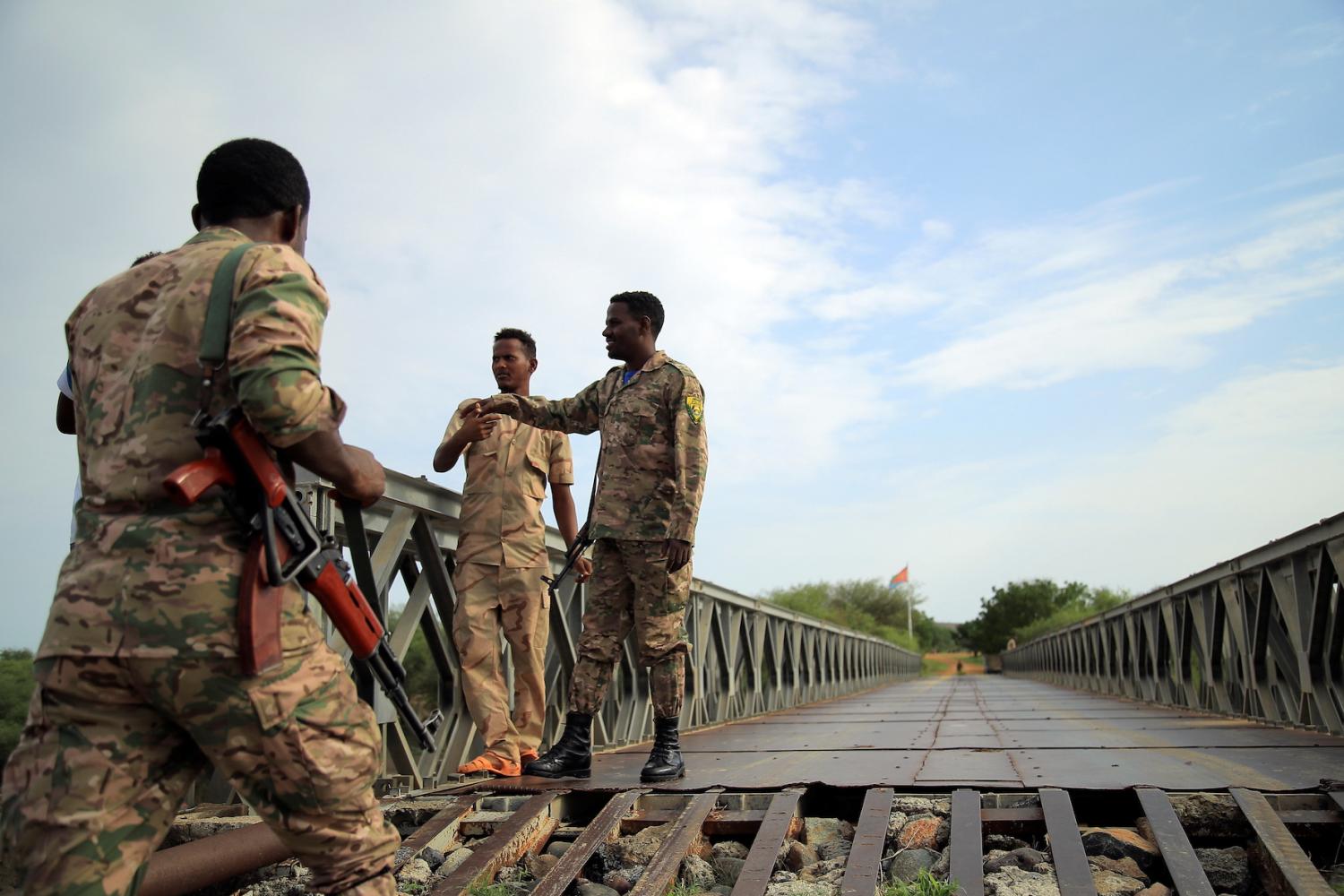


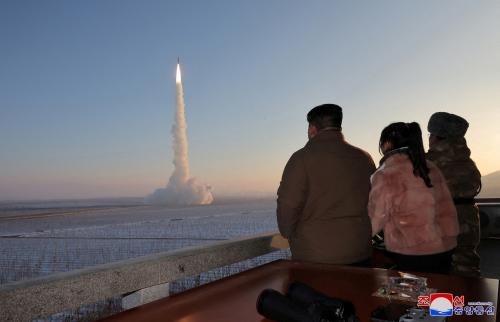
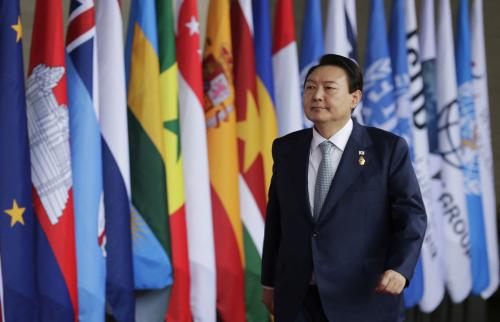
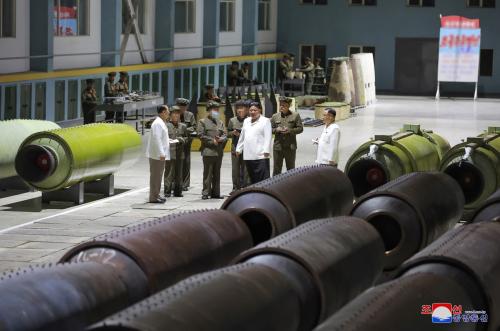
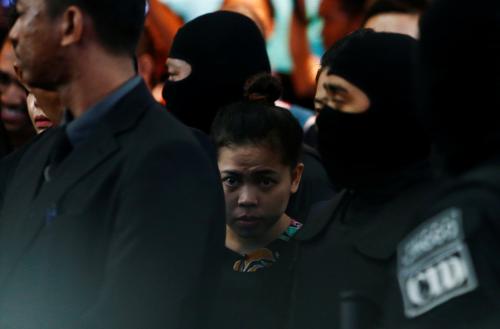
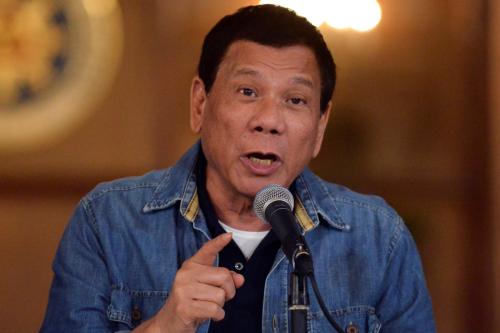
Commentary
Expect to see more North Korean weapons reach nonstate armed actors in 2024
February 21, 2024